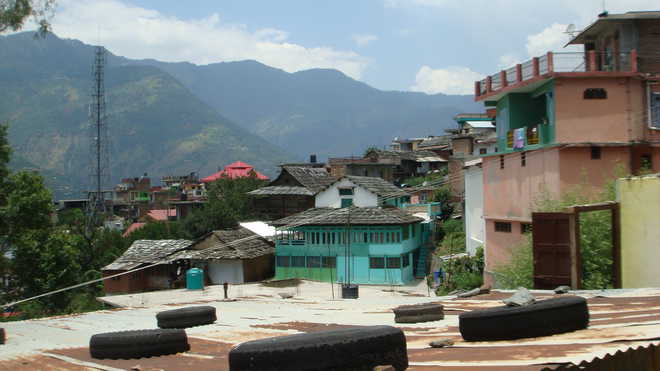Raaja Bhasin
The legend of Parshurama runs across the length of India. He was the sixth avatar of Vishnu and was the one just before Rama himself.
In the South, it was he who held back the advancing seas and settled the coastline that lies off Mumbai. From the country’s southern tip at Kanyakumari, where he is believed to have installed a deity, to the North where he is venerated at a huge fair held in his honour at Akhnoor in J&K, his story runs like a longitudinal line of belief and marks the places associated directly or indirectly with him. He was ‘Parshu’ and ‘Rama’, “Rama with an axe who sought to rid the world of wrongdoers and of people who had failed in their duties”. To this end, he destroyed 21 generations of a branch of Kshatriyas, who he felt had fallen in their duties.
Duty, above all was paramount. The story is told of the time when his father — sage Jamdagini — had doubts about the fidelity of his wife, Renuka. He ordered Parshurama to kill his mother. Unable to disobey his father, he committed the heinous act and as Renuka fell, she was embodied as the lake named after her. But the axe which he had used to behead his mother, refused to leave Parshurama’s hand. Carrying the headless body of his mother over his shoulder, he moved from place to place till he arrived at the spot, where Nirmand now lies. And here, he received a boon for the revival of his dead mother.
The word ‘Nirmand’ is regarded as a derivative of ‘Nir - mund’, or without a head. For some still unexplainable reason, Nirmand has also been a major centre of the bhunda, a ritual of ‘human sacrifice’ that follows a cycle of approximately 12 years.
Still substantially populated by Brahmins to whose ancestors Parshurama is believed to have given land grants, the village of Nirmand in the outer Seraj region of Kullu, is the largest village in Himachal. Here, legend brushes by verifiable history and one of the oldest extant records from the hills of Himachal comes in the shape of what is called the ‘Nirmand Copper Plate’. This plate records a land grant and is dated to the 7th century.
Narrow streets – some paved with concrete, some with flagstones, some with tarmac and many still of dusty mud – wind their way through the few acres that form the core of this village that may well have been inhabited for a millennium-and-a-half.
The path to the kothi of Parshurama slices through the heart of the village. The kothi, ‘residence and temple’ of Parshurama is a remarkable structure that has a pent-roof and age-old lines of wood and intricate carvings that make its façade. Here lies the mythical axe of Parshurama and several other items of dress and armour that are attributed to him – and are only taken out of their cave at the time of the “bhunda” ritual. Just outside this precinct is a tiny – but remarkably elegant – temple of Shiva that is barely the height of a child, but has perfectly classical proportions.
En route to the kothi lies the sacred ‘Latta Baoli’, where clear spring water gushes into a small tank. This has been mentioned by scholar AH Franke in ‘The Antiquities of Indian Tibet’. The miniscule sanctum is preceded by a small antrala. The dating of the temple is not specific, but it is placed in period immediately preceding the Prathira period – or in its early years; this would place the temple date c. 8th century. Local belief has it that when the sage Parshurama came to Nirmand in the Treta Yuga, he instituted several rituals and sacrifices including the bhunda. Pure Gangajal was required for these sacrifices and with his efforts, Parshurama caused a flow of the Ganga to appear at this spot.
(The writer is an author, historian and journalist)
Unlock Exclusive Insights with The Tribune Premium
Take your experience further with Premium access.
Thought-provoking Opinions, Expert Analysis, In-depth Insights and other Member Only Benefits
Already a Member? Sign In Now











